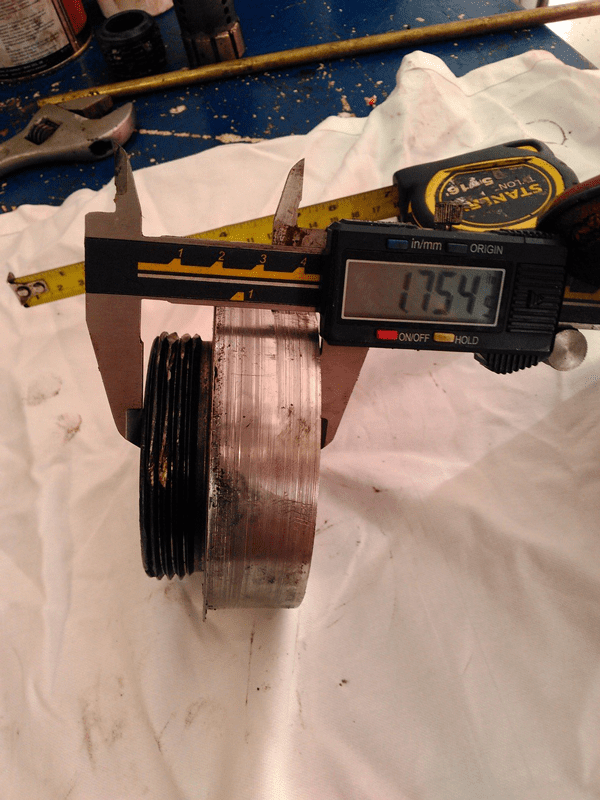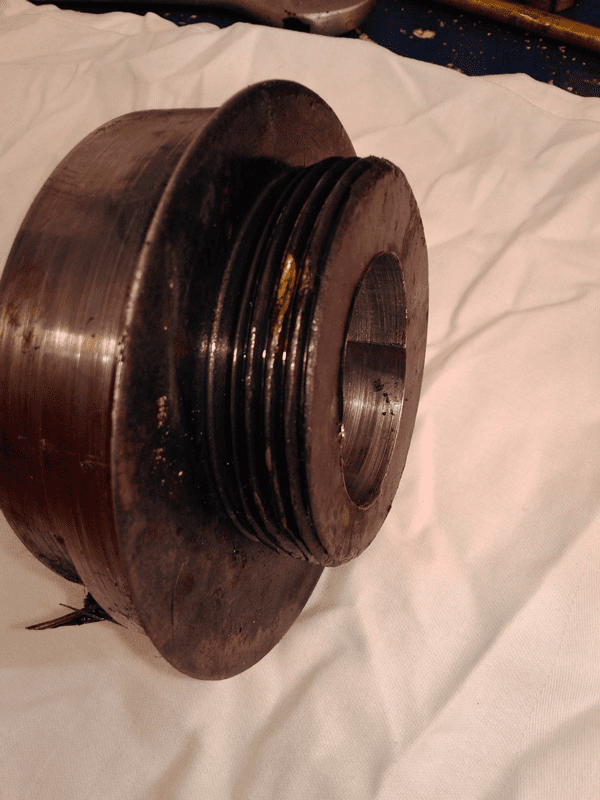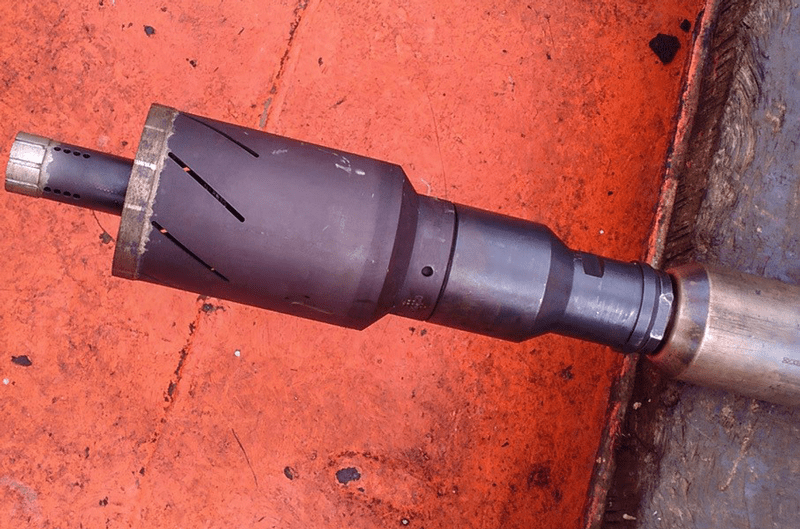The recent introduction of an advanced hardware milling system has made a significant industry impact and, as illustrated by the following case, a “CNC-like” milling operation was completed in under 10 hours while also recovering the stellite-coated coupon to surface.
When TotalEnergies faced a challenging situation with a subsea Christmas tree in the North Sea, the need for a highly accurate and controllable hardware milling solution emerged. Downhole access was being blocked by a flow target lying in an upside-down position; this was also preventing the continuation of plug and abandonment activities. The inner diameter going through the Christmas tree made it impossible to fish the stainless-steel flow target, which was also coated with an incredibly resistant layer of stellite. The only viable solution was to mill the flow target but, due to its highly resistant composition, and the fact that the operation would need to be carried out from a semi-submersible rig, the situation demanded an incredibly accurate solution which could deliver fine control of the weight on bit.
A Displaced Flow Target
On these subsea wells, there is a wellhead at the seabed that contains two crown plugs to stop any fluids coming directly out of the wellbore. They have pipework off to the side, directing the production via pipelines back to the nearest platform, and the two are usually set one on top of the other and just a couple of feet apart. In order to access the well and perform interventions, these crown plugs must be removed.
The lower crown plug is exposed to the production coming up the well and deflects it off to the side where the flowline access is. The production rate can include a high rate of fluid and also contain solids that can have a scouring effect. On the underside of the lower crown plug is an object called a flow target, which is a target for the flow to hit, and because it is very hard-wearing it does not erode or disintegrate. It is made of strong stainless steel and, in addition, it is coated with a chemical treatment called stellite, which is only a few microns thick but makes it incredibly hard wearing.
The flow target is a circular disc about eight inches in diameter and contains a sizable threaded element. This threaded section screws into the bottom of the crown plug. Over time, an erosion effect on the threads had resulted in the flow target falling a few feet down onto a shoulder restriction. The flow target could not fall any further, and had also flipped 180 degrees to sit upside down. When coming in from above, any tool would meet the underside, which is the most resistant stellite-coated side.
An additional problem was the dimensions of the flow target being so tight against the inside diameter through the subsea tree, and this made it impossible to fish. The only solution was to mill a hole through the flow target to access the well and enable TotalEnergies to complete plug and abandonment.
Although high-pressure water jetting technology has worked for similar applications, performing this downhole is very complex and needs high-pressure hoses to run down the well – again, not an option without prior access. TotalEnergies also considered coiled tubing and drill pipe applications; however, while these may have successfully destroyed the flow target, they might also damage the tubing hanger. Something with more surgical accuracy was required.


Utilizing an Advanced Milling Platform
Welltec proposed an advanced hardware milling platform: Well Miller® CVF – Continuous Variable Force, offering industry-leading levels of precision and control. Due to the CVF platform’s ability to provide dynamic weight on bit with up to 5,000 pounds of force, the operation would be fully optimized against the challenging stellite material.
Before the operation, extensive testing led to the development of a custom-made two-stage bit (pilot and core) to ensure the retention of the milled-out coupon. A specially designed sleeve was first set above the flow target, and this ensured off-center engagement, thus preventing the flow target from simply rotating upon contact. The stroker (actuation) section of the toolstring was anchored above the Christmas tree, with a shearable spacer bar between this and the mill bit.
After the pilot section of the mill bit breached the flow target, weight on bit was increased in increments of 100 pounds, with surface readout (SRO) data enabling the precise monitoring of the stroker extension. Over two runs, a 4.4” hole was created through the flow target and, to the client’s considerable relief, the coupon was recovered back to surface. This allowed the setting of a 3” ID conduit sleeve to ensure safe access for subsequent runs into the well with a deep-set plug, after which a Well Cutter® 238 was utilized to cut the 4 1/2” completion.
The two-stage bit consisted of a smaller pilot section tipped with metal matrix compound (MMC), which is diamond-encrusted, that performs the milling action. In addition, the pilot section included fins along the side that expanded and trapped the coupon after milling. Guided by the pilot, the main core milling section produced the large hole. The tool featured two stages because it was the safest way to capture the whole coupon, preventing a scenario where the entire coupon would be lost downhole.
Two-stage mill bits have been deployed successfully on previous operations but, to get them to perform optimally, the weight on bit must be variable and correspond to the size of the mill bit. This means a lower weight on bit for the pilot, which incidentally provides higher pounds per square inch due to the smaller contact area, before increasing the level for the larger core area.
Well Tractor and Well Stroker
A Well Tractor® can also be used in conjunction with a Well Miller tool to provide weight on bit, with the reactive torque preventing rotating tools spinning on the end of the wireline. However, because this was an application at a shallow depth in the well, taking place from a floating semi-submersible rig (subject to wave heave, even with compensation), fine milling control using Well Tractor force would have been very challenging. For this reason, another mechanical tool called the Well Stroker® – a self-anchoring axial piston – was utilized.
The Well Stoker is a bi-directional actuation device and, in the context of hardware milling, can deliver up to 5,000 pounds in increments of 100 pounds. It is this combination (Well Stroker-Well Miller) that helps create the Continuous Variable Force (CVF) milling platform.
The final element of the solution was the sleeve that deliberately pushed the milling tool off-center to ensure it did not meet the middle of the flow target, which was otherwise free to rotate. By setting a sleeve, that kicked the bit over to the side of the flow target, which could only move a few degrees before jamming as required.
A Successful Operation
Not only did TotalEnergies regain access to the well and therefore the ability to continue P&A operations, but savings in the region of US$2 million were made by utilizing Welltec’s e-line deployed Well Miller CVF. Rig-up time was just a few hours in comparison to entire shifts, which would have been required for a coiled tubing solution, and the stellite-coated stainless steel flow target was milled in ~10hrs, with the milled coupon recovered to surface.
Headline photo: New mill bit. Photos courtesy of Welltec.
Andy Jessiman is Business Development Manager for Welltec®, covering the North Sea and Continental Europe. He has been with Welltec since 2011 in technical, operational, and commercial roles. Jessiman has been in well interventions since 1996, with field and operational positions held in the U.K., U.S., Canada, Caspian area and the Middle East.
Oil and gas operations are commonly found in remote locations far from company headquarters. Now, it's possible to monitor pump operations, collate and analyze seismic data, and track employees around the world from almost anywhere. Whether employees are in the office or in the field, the internet and related applications enable a greater multidirectional flow of information – and control – than ever before.




